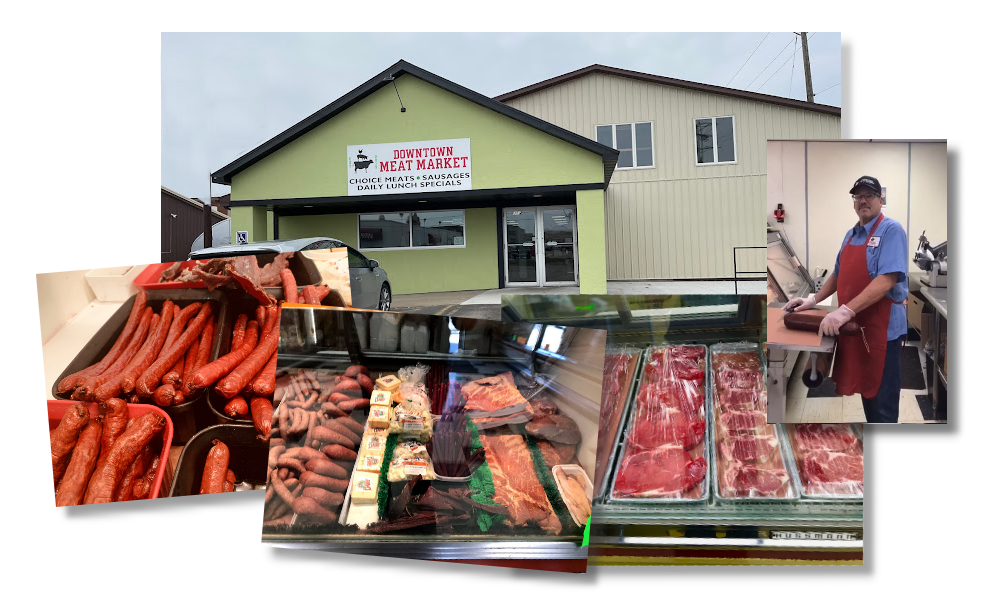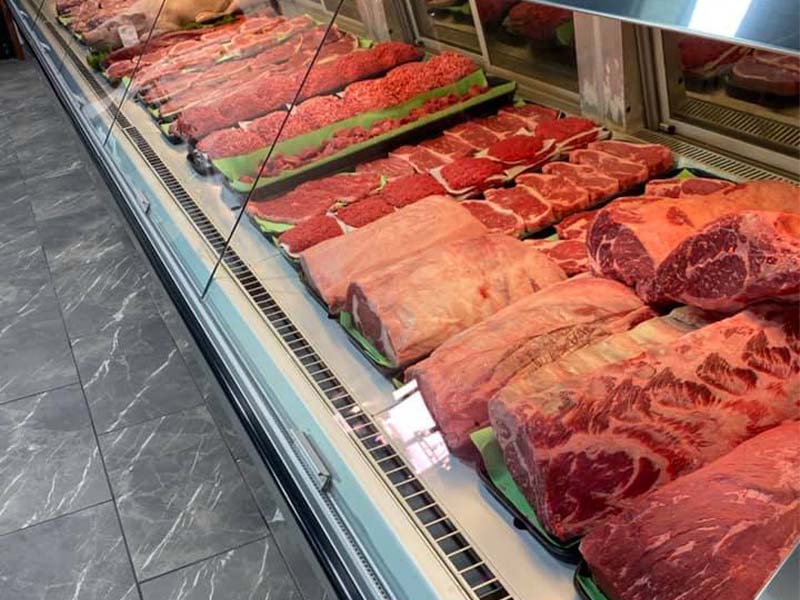Why Bagley Farms Meat Market Edwardsville IL Is the very best Choice for Quality Meats
Why Bagley Farms Meat Market Edwardsville IL Is the very best Choice for Quality Meats
Blog Article
Reveal the Art of the Butcher's Cut in a Modern Meat Market
In the ever-evolving landscape of contemporary meat markets, the butcher's cut has transcended its typical roots, combining olden craftsmanship with contemporary practices. Today's butchers are not just cpus of meat; they are knowledgeable artisans who emphasize sustainability and honest sourcing. Their know-how in selecting and preparing cuts tailored to particular cooking requirements offers an unparalleled eating experience. What absolutely sets the modern-day butcher apart is their capacity to build a deeper link in between consumers and the origins of their meat. Exactly how do these masters balance tradition with development, and what ramifications does this have for the future of meat usage?
Advancement of Butchery Strategies
The development of butchery techniques mirrors an abundant tapestry of development and adjustment driven by improvements in innovation, modifications in consumer demand, and a deeper understanding of meat scientific research. Historically, butchery was a craft passed down via generations, with methods refined over centuries to optimize yield and flavor. Nonetheless, the industrial revolution introduced mechanization, changing standard practices and enabling massive processing.
The mid-20th century saw butchery techniques even more fine-tuned by clinical insights right into muscular tissue biology and meat aging, boosting both inflammation and preference. Innovations like vacuum product packaging and refrigeration expanded product shelf-life, enabling butchers to diversify offerings and improve quality assurance. This duration likewise noted the rise of specific equipment, such as band saws and meat slicers, which increased accuracy and performance in meat processing.

Electronic systems currently assist in monitoring pet provenance and enhancing cuts to fulfill details consumer choices. Additionally, a rebirth in artisanal butchery has emerged, blending conventional skills with modern knowledge to provide to consumers seeking honest and lasting meat choices.
Recognizing Meat Cuts
Comprehending the intricacies of meat cuts is vital for both butchers and consumers seeking top quality and worth. Each cut comes from a different part of the animal, passing on distinct tastes, textures, and cooking methods - bagley farms meat market edwardsville il. Mastery of these differences not only enhances culinary experiences but also makes the most of the energy of each carcass. For butchers, precise cuts mirror ability and respect for the craft, guaranteeing marginal waste and optimal yield.

Understanding muscular tissue composition is important; muscular tissues used more regularly by the animal often tend to be harder and are best matched for slow-moving cooking methods, while less-used muscle mass, like those found in the loin, are a lot more tender and suitable for grilling or roasting. Knowledge with these distinctions equips customers to make informed choices, enhancing their culinary ventures.
Selecting Quality Meat
Choosing the ideal meat includes greater than simply picking an aesthetically attractive item click for source from the screen. bagley farms meat market edwardsville il. The art of selecting quality meat needs a critical eye and understanding of specific qualities that represent quality and quality. Pay interest to the color; beef ought to have a bright, cherry-red shade, while lamb ought to exhibit a soft pink tone, and pork a light pink. This shows the meat is fresh and hasn't been subjected to oxygen for as well long.
Secondly, think about the marbling, which describes the white flecks of fat within the muscular tissue. Appropriate marbling is a vital indicator of tenderness and taste, as it thaws during food preparation, boosting the meat's juiciness. Bear in mind, higher marbling commonly associates with superior top quality cuts, such as USDA Prime.
Texture is an additional critical aspect; meat must really feel strong to the touch, not slimed or excessively soft. Furthermore, bear in mind the aroma. Fresh meat should have a clean, neutral odor, without any type of sour or repulsive odors.
Pairing Cuts With Food Preparation Methods

Conversely, harder cuts like brisket and chuck roast are abundant in collagen, which breaks down into gelatin when cooked slowly. These cuts are optimal for braising or slow roasting, permitting Read More Here the meat to tenderize in time and develop deep, complicated tastes. Likewise, cuts such as short ribs and pork shoulder prosper with slow-cooking methods, where extended cooking times change their durable appearances right into delicious Check This Out meals.
Lamb shanks and oxtail, which require extended cooking to soften, are best candidates for stewing or sluggish simmering. These techniques coax out abundant, hearty flavors while preserving dampness. By understanding the distinct attributes of each cut, cooks and home chefs alike can boost their culinary creations, guaranteeing each recipe is both satisfying and unforgettable.
The Butcher's Duty Today
Browsing the developing landscape of the modern meat market, the butcher's role today extends past simple prep work of cuts. Contemporary butchers are cooking craftsmens, educators, and advocates for lasting techniques.
Along with crafting precise cuts, butchers now involve directly with clients, using cooking recommendations and customizing selections to suit private needs and preferences. Their proficiency in meat aging, marbling, and taste profiles encourages consumers to make enlightened choices, enhancing their cooking experiences. This individualized solution exhibits the butcher's developing duty as a relied on advisor in the kitchen area.
Furthermore, butchers are essential in minimizing waste, making use of entire animals to develop varied products such as sausages and stocks. This extensive approach not only respects the pet however additionally straightens with modern sustainability goals. This way, the modern-day butcher embodies both custom and development, adjusting to an ever-changing market while protecting the artistry and honesty of their craft.
Verdict
The modern butcher's craft delicately weaves standard methods with contemporary advancements, emphasizing lasting methods and ethical sourcing. Mastery in recognizing varied meat cuts and high quality indicators encourages butchers to offer enlightened recommendations, aligning certain cuts with optimum food preparation techniques. This experience not just raises cooking experiences however additionally reinforces the connection between customers and the origins of their food. By recognizing historical methods while accepting contemporary needs, the butcher's role remains vital in today's advanced meat market (bagley farms meat market edwardsville il).
Report this page